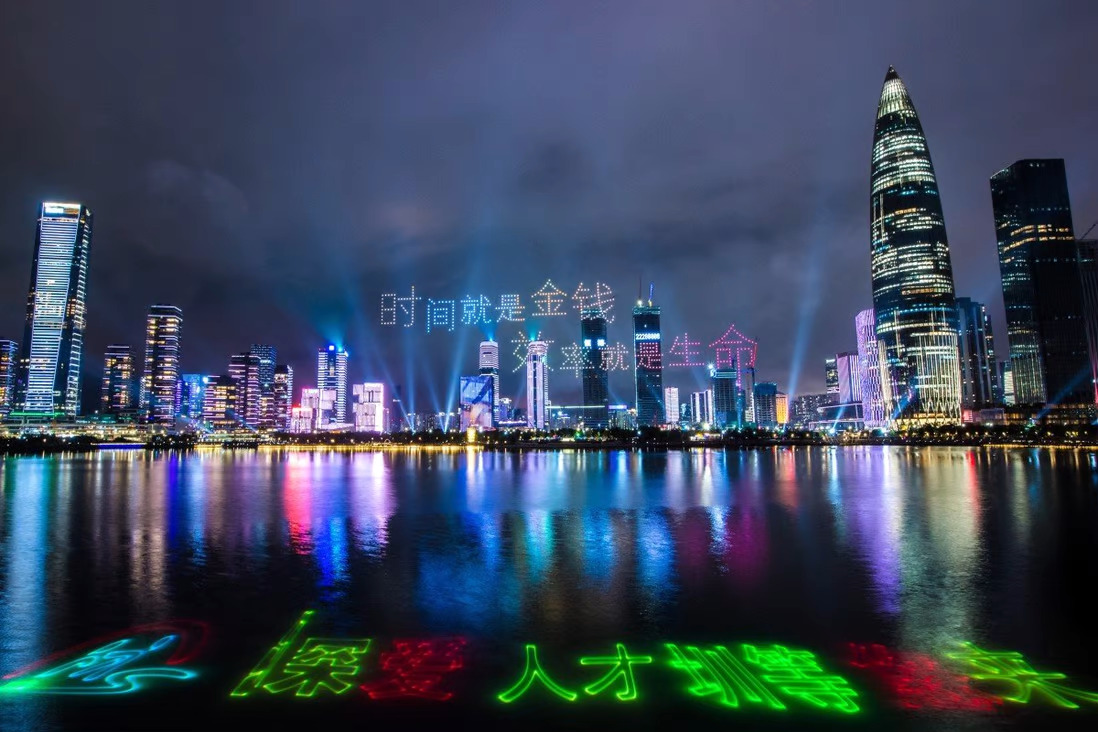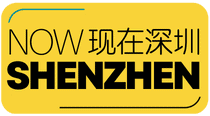
A light show featuring 826 drones in China’s southern technology hub of Shenzhen on August 26, 2020. The city has unveiled a new subsidy scheme that covers many electronics, including those from local drone maker DJI, in an effort to boost consumption. Photo: Xinhua
China’s southern technology hub of Shenzhen is turning to subsidies to help boost consumption of a range of electronics and other products that include smartphones, laptops and drones, as the economy remains under pressure from Beijing’s strict zero-Covid-19 policy.
Under the plan, consumers can receive subsidies of up to 15 per cent, for a maximum reimbursement of 2,000 yuan (US$300) per person, on purchases of specified products, according to an announcement jointly issued on Thursday by the Development and Reform Commission of Shenzhen Municipality and a handful of local authorities, including the commerce bureau.
Other electronics covered by the scheme include wearable devices and smart home appliances, robots, and fitness equipment. A preliminary catalogue released on April 30 of electronics and home appliances eligible for subsidies does not list any foreign brands such as Apple or Samsung, but more than 40 per cent of the 8,249 items listed – which includes different models of the same products – are from Shenzhen-based Huawei Technologies Co. Hundreds of Oppo and Vivo products are also listed, while Beijing-based smartphone giant Xiaomi is conspicuously missing.
Reached by phone on Thursday, a representative of the Shenzhen commerce bureau said the list of eligible products will be updated within the next two days, but the person did not know which products or brands might be added.
The measure, which also covers cars and tourism, is designed to “stimulate consumption potential, expand consumer demand and boost consumer confidence”, the government said in its announcement.
The government plans to spend 70 million yuan on the subsidies for consumer electronics and 30 million yuan for home appliances, according to the April announcement. Consumers wishing to apply for the subsidy need to pay with Yunshanfu, a mobile payment app from the state-owned debit and credit card provider UnionPay, at a bricks-and-mortar shop. Customers must fill out a form while at the store, and the merchant will submit the application and invoice for approval to UnionPay, which will reimburse consumers through the app.
The government has not said whether these same rules apply to the scheme as announced on Thursday.
To help boost awareness of the scheme, the commerce bureau and other Shenzhen agencies plan to organise multiple rounds of promotions for electronics from May to August, which will be focused around summer vacation, schools reopening and other occasions.
Telecoms operators are also being encouraged to work with gadget makers to offer incentives such as trade-ins and mobile plan upgrades. Companies that sell recycled devices in Shenzhen could receive a subsidy of 5 per cent of their sales.

Huawei’s foldable P50 Pocket smartphone is among many products from the Shenzhen-based company eligible for the city’s subsidy scheme, but Beijing-based rival Xiaomi is not included.
In addition to the electronics subsidies, the policy offers consumers a maximum of 10,000 yuan for each eligible new energy vehicle that is purchased and licensed in Shenzhen. The vehicle purchase tax is also waived under a previous national policy.
The Shenzhen plan comes a day after Chinese Premier Li Keqiang announced a 33-point package of policy items to stabilise the nation’s faltering economy and support businesses struggling amid the country’s stringent zero-Covid policy, which has imposed extended lockdowns across the country and disrupted business operations and people’s livelihoods.
Shenzhen, which was put under a citywide lockdown for a week in March, reported a first-quarter gross domestic product of 706.5 billion yuan, up 2 per cent from last year. This was well below national GDP growth of 4.8 per cent for the quarter. Shenzhen is targeting 6 per cent growth for the year.
Many factories and businesses have resumed normal operations in Shenzhen, but the city of 17 million still requires residents to present negative Covid results from a test taken within 72 hours of entering public transport or other public venues.
On Tuesday, the Shenzhen government said it would distribute a total of 243 million yuan to 226 companies, including 10 million yuan each to US carmaker Tesla and Chinese online grocer Pupu.
The government established the cash incentive programme last month to support its effort to transform the city into an international shopping destination by building world-class commercial districts and attracting renowned brands.
Shenzhen has also announced a 500 million yuan voucher scheme in late April, which will be distributed through the online delivery and local services platform Meituan and e-commerce firm JD.com in four rounds before the end of June.
That scheme includes 400 million yuan for shopping, 60 million yuan for catering, 10 million yuan for tourism and 30 million yuan for red packets of e-CNY, China’s central bank digital currency being trialled in several cities.
ARTICLE FROM: South China Morning Post

